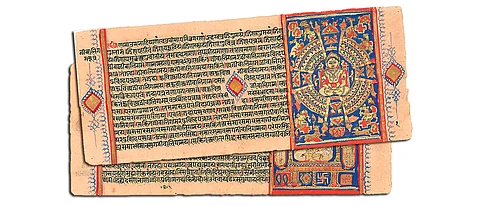
- Destinations
- Experiences
- Stay
- What's new
- Editor’s Picks
- Responsible Tourism
- CampaignsCampaigns
- Subscribe

People belonging to Bihar have often been asked outside the state Do you speak Bihari, a question they are likely to find bizarre. For contrary to popular perception, there is no language such as Bihari and not all people of Bihar speak Bhojpuri (the dialect most associated with Bihar). While Hindustania colloquial mix of Hindi and Urduis spoken throughout Bihar, different regions have different dialects. There are five dialectsBhojpuri, Magahi, Maithili, Angika and Vajjika (also known as Brajjika or Bajjika). Most speakers of these dialects can easily understand, if not speak, standardised Hindi.
Despite the advertisements for English coaching classes you are likely to come across in every town in the state, English is not commonly spoken. While in the larger cities such as Patna and Gaya you can find English speakers, or at least people who comprehend basic English, this ishighly unlikely in most villages. Interestingly, some English words, such as time or ladies, have become a part of colloquial vocabulary and even those who do not know the English alphabet freely use them.
Maithili
Maithili is primarily spoken in the Mithila region of BiharDarbhanga, Saharsa, Madhubani, Sitamarhi, Madhepura and Supaul. There are many native Maithili speakers residing in major cities of Bihar and Jharkhand as well as other parts of India. The total number of Maithili speakers in the country is pegged at 32 million. In Nepal, 3 million peopleabout 12 per cent of the populationspeak Maithili, making it the second most spoken language in the country after Nepali. Maithili was initially classified as a dialect of Hindi, but following agitations for its recognition as a separate language, it was included in the Eighth Schedule of the Indian Constitution, making it one of the 22 official languages of India. Although in the 19th century, Maithili was regarded as a dialect of Hindi or Bengali (with which also it is largely intelligible), George Abraham Grierson, a Colonial linguistic scholar and civil servant, recognised its uniqueness and deemed it a distinct language. Maithili was earlier written in the Mithilakshar script, which is similar to the Bengali language script, but over time Devanagarithe script currently used for writing Hindibecame the standard. The Varna Ratnakar of Jyotirisvara Kavisekharacarya, which dates back to the 14th century, is the earliest written text in Maithili.
Bhojpuri
Bhojpuri is primarily spoken in the districts of Bhojpur, Buxar, Saran, Champaran, Kaimur and Rohtas. It is also the main dialect of eastern Uttar Pradesh. During the Colonial era, peasants from Bihar migrated to work as indentured labour in sugarcane plantations in Guyana, Mauritius, Trinidad and Tobago, Suriname and Fiji. Consequently, Bhojpuri and its variants is still spoken in some of these countries. Bhojpuri was initially written in Kaithi, a script used for writing legal, administrative and private records during the Mughal rule and the British Raj. Now the Devanagari script has supplanted Kaithi. There has been a longstanding demand to recognise Bhojpuri as a distinct language and not merely a dialect of Hindi. In 2012, Ravikant Dubey, Chairperson of the Bhojpuri Academy, sent letters to several Members of Parliament with the same demand. In response, P Chidambaram, the then Home Minister of India, said in BhojpuriHum rauwasabke bhavna samjhatani (I understand your feelings). Chidambarams response made it to the newspapers and received plaudits from Meira Kumar, the then-Speaker of the Lok Sabha and a native of Bihar. Nevertheless, Bhojpuri has still not been recognised as an official language.
Bajjika
Bajjika is largely spoken in the Bajjikanchal region of BiharVaishali, Muzaffarpur, Sheohar, Samastipur and parts of Sitamarhi and Champaran. There are no precise figures on the number of speakers, but according to some estimates, Bajjika is the mother tongue of about 15 million people. There are about 200,000 people in neighbouring Nepal who speak the language. Bajjika was earlier known as Vaishali ki boli, Vrijjika and Brijjika. These names have been derived from Vrijji, a small kingdom that ruled over Vaishali around 600 BCE.
Angika
Angika is primarily spoken in the Anga region (south-eastern Bihar) which comprises of the districts of Munger, Katihar, Bhagalpur, Jamui and Banka. It is also spoken in parts of Jharkhand and Nepal. Closely related to Bengali and Maithili, Angika is also considered a dialect of the latter. Estimates about the number of Angika speakers range widely, from 750,000 to 30 million. According to the renowned scholar Rahul Sankrityayan, the oldest written Hindi literature is the Buddhist tantric Siddhacharyaand poetSarahas verses in Angika which date back to around 800 CE.
Magahi
Magahi (also known as Magadhi) language has descended from Magadhi Prakrit, the language believed to be spoken by the Buddha. There are 13 million speakers of Magahi, primarily in the districts of Patna, Nalanda, Gaya, Nawada, Jehanabad and Aurangabad. The language was earlier deemed crude by upper castes. About this, Grierson, the Colonial linguist, writes Magahi is condemned by speakers of other Indian languages as being rude and uncouth like the people who use it. In fact, the principal difference between it and Maithili is that the latter has been under the influence of learned Brahmanas for centuries, while the former has been the language of the people who have been dubbed boors since Vedic times.
